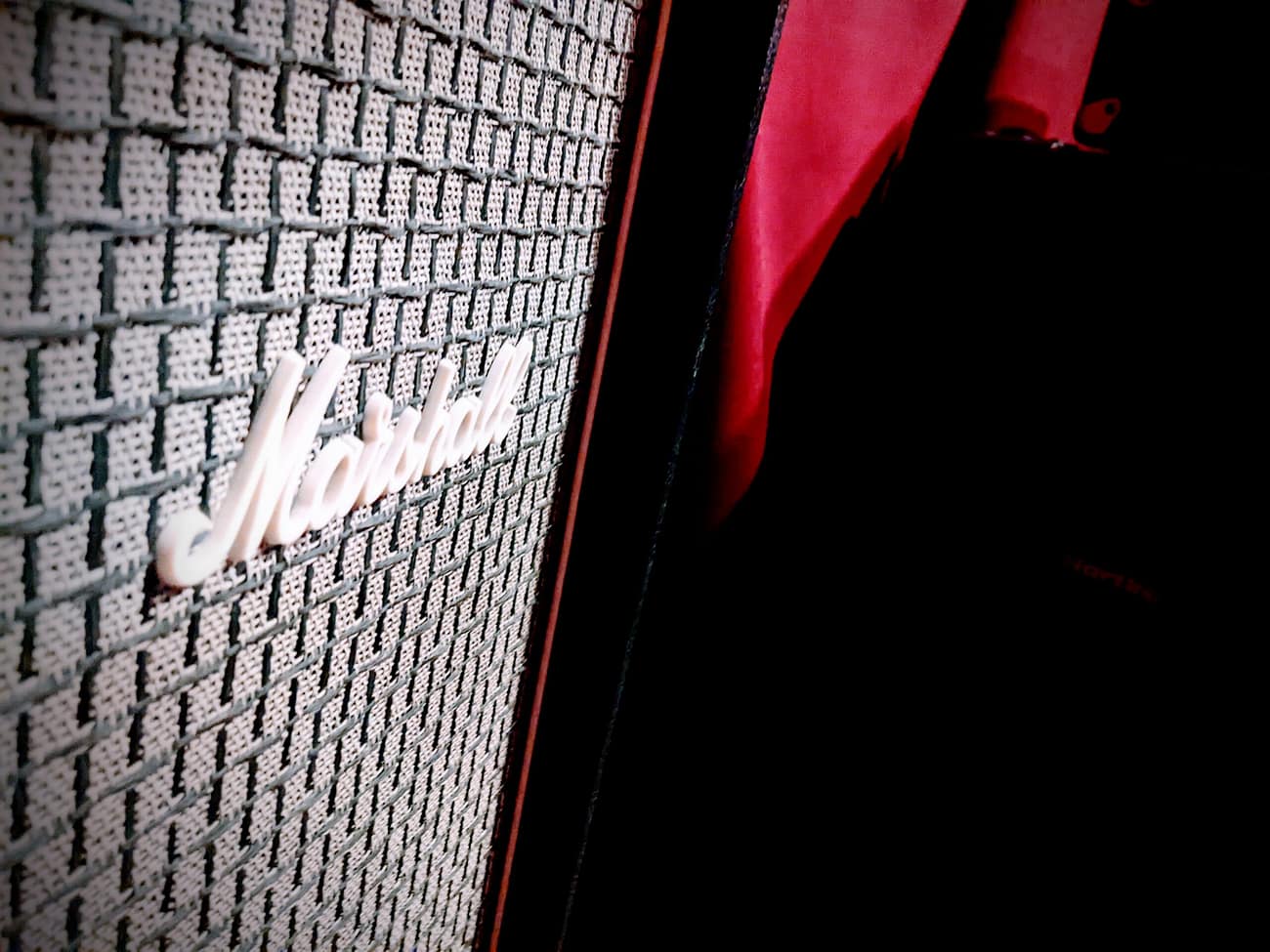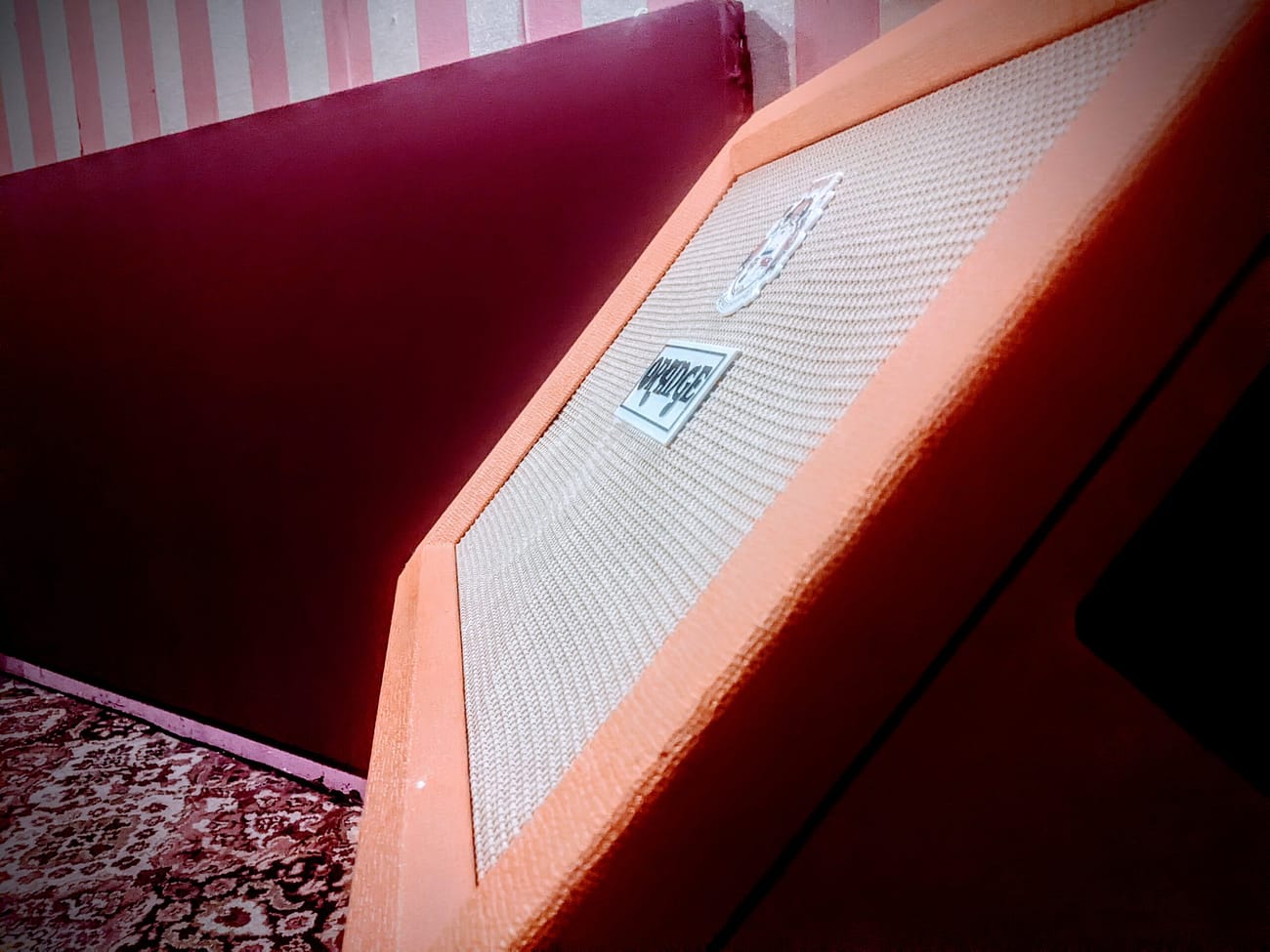THE BLUFFERS GUIDE TO | GUITAR CABS
FROM BIG TO SMALL WE LOVE THEM ALL
Guitar cabinets, also known as speaker cabinets or speaker enclosures, are an integral part of a guitar amplifier setup. They are designed to house and project the sound produced by the amplifier head and speaker combination. There are several types of guitar cabinets available, each with its own unique characteristics. Here are some of the common types: Open Back Cabinets: These cabinets have an open rear panel, allowing sound to project in multiple directions. They typically produce a more airy and spacious sound with a wider dispersion. Open back cabinets can offer a more dynamic and less focused sound. Closed Back Cabinets: Closed back cabinets have a sealed rear panel, which results in a more focused sound projection. They provide a tighter low-end response and enhanced low-frequency resonance. Closed back cabinets are often preferred for genres that require a more precise and controlled sound. Convertible Cabinets: Some cabinets feature a removable back panel, providing the option to switch between open and closed configurations. These versatile cabinets offer flexibility, allowing you to adjust the sound to your preference or the specific playing environment. Straight Cabinets: Straight cabinets have a standard rectangular shape and are the most common type of guitar cabinet. They are often equipped with one or multiple speakers arranged in a vertical configuration. Straight cabinets provide a balanced sound projection with good dispersion. Slant Cabinets: Slant cabinets, also known as angled cabinets, have a trapezoidal shape with the top portion angled upward. The purpose of this design is to direct the sound toward the player’s ears, providing better monitoring on stage. Slant cabinets are commonly used in live performances. Speaker Size: Guitar cabinets can come with various speaker sizes, typically ranging from 8 inches to 15 inches in diameter. Smaller speakers tend to produce a more focused sound with less bass response, while larger speakers can provide a fuller low-end and handle higher volume levels. It’s important to note that the choice of guitar cabinet depends on personal preference, playing style, musical genre, and the specific sound you want to achieve. Experimenting with different cabinet types, speaker configurations, and sizes can help you find the perfect combination for your desired tone. |

Why is it important to match the amp and cab?
Matching the amplifier head and speaker cabinet is important for several reasons: Impedance Matching: Amplifiers and speaker cabinets have specific impedance ratings, typically 4, 8, or 16 ohms. It is crucial to match the impedance of the amplifier head with that of the speaker cabinet. Mismatched impedance can result in poor sound quality, loss of power, and potentially damage the amplifier or speakers. For example, if an amplifier designed for an 8-ohm load is connected to a 4-ohm cabinet, it can overload the amplifier and cause it to overheat or fail. Power Handling: Amplifiers have different power ratings, typically measured in watts. Speaker cabinets are also rated for power handling, indicating the maximum wattage they can handle without distortion or damage. It is important to match the power handling capabilities of the cabinet to the output power of the amplifier. If the amplifier delivers more power than the cabinet can handle, it can lead to speaker damage or even blow out the speakers. Tone and Response: Different amplifier heads and speaker cabinets have unique tonal characteristics. Matching the right combination can help you achieve the desired tone and response. For example, certain amplifier heads may sound better with closed back cabinets for tight low-end response, while others may pair well with open back cabinets for a more spacious sound. Experimenting with different combinations allows you to find the synergy that suits your playing style and musical preferences Efficiency and Performance: Matching the amp and cab ensures that they work together efficiently, optimizing the overall performance. A well-matched combination allows the amplifier to deliver its power effectively to the speakers, resulting in better sound projection, clarity, and overall performance. It ensures that the speakers are driven optimally, maximizing their potential and producing the desired tone. |
SIZE IS EVERYTHING
| Guitar cabinets come in various sizes, typically defined by the diameter of the speaker(s) they house. Here are some common sizes available: 1×12: This refers to a cabinet with a single 12-inch speaker. 1×12 cabinets are popular for their portability, compact size, and focused sound. They offer a good balance between size and projection, making them suitable for small to medium-sized venues or studio settings. 2×12: A 2×12 cabinet features two 12-inch speakers. This configuration provides a fuller sound compared to a 1×12 cabinet, with a wider frequency response and improved low-end presence. 2×12 cabinets are often favored by guitarists who want more volume, a bigger stage presence, or a broader sonic footprint. 4×12: A 4×12 cabinet is an iconic and widely used configuration that includes four 12-inch speakers. It is commonly known as a “quad box.” 4×12 cabinets offer a powerful and massive sound, with substantial low-end response and high volume capabilities. They are frequently used in live performances where a significant stage presence is desired, especially in rock and metal genres. Other Sizes: While 1×12, 2×12, and 4×12 cabinets are the most common, there are other sizes available as well. These can include 1×10, 1×15, 2×10, 2×15, and more. Each size has its own tonal characteristics and suitability for different musical styles, venues, and personal preferences. It’s important to note that the size of the cabinet can influence the overall sound and projection. Smaller cabinets tend to have a more focused and directional sound, while larger cabinets offer a broader dispersion and greater low-end response. The choice of cabinet size depends on factors such as the desired sound, playing style, genre, venue size, and personal preference. |

NOT ALL CABLES ARE EQUAL
| When connecting a guitar amplifier head to a speaker cabinet, you should NOT use an instrument cable. Instead, you should use a speaker cable. Speaker cables are specifically designed to handle the high-power signal that is sent from the amplifier to the speaker cabinet. They have a thicker gauge wire and are built to handle the higher current and voltage levels associated with speaker-level signals. Using an instrument cable to connect an amplifier head to a speaker cabinet can result in poor signal transfer, loss of tone, and potentially damage the equipment. To clarify, instrument cables are suitable for connecting guitars, basses, or other instruments to amplifiers or effects pedals, where the signal levels are much lower. However, when it comes to connecting an amplifier head to a speaker cabinet, it is essential to use a speaker cable to ensure proper signal transmission and to prevent potential damage to your gear. |
